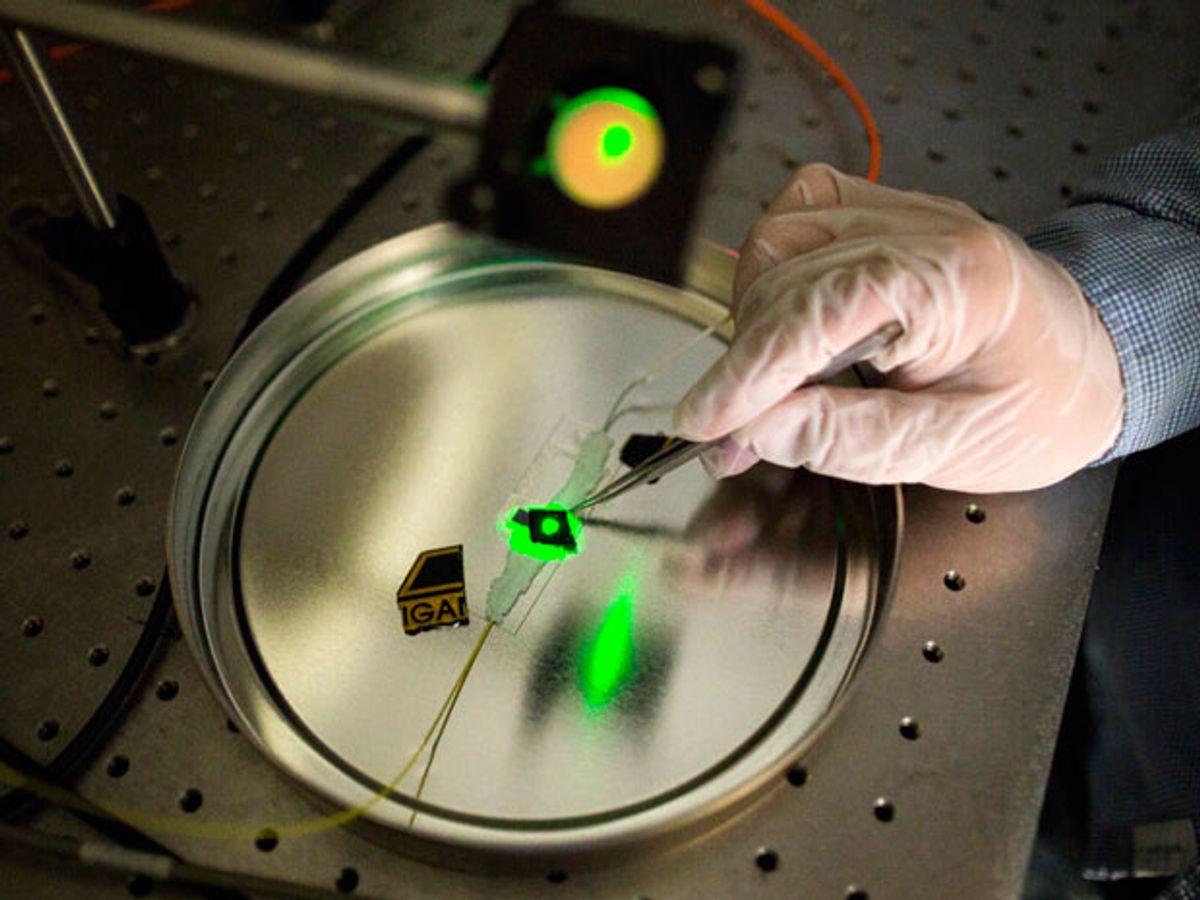Terahertz waves, which are non-ionizing and can penetrate fabrics and body tissue, could be used to reveal hidden weapons and spot skin cancer and tooth decay. But they are notoriously difficult to detect.
Engineers at the University of Michigan have invented a simple new way to sense them. They use a carbon nanotube-rubber material to convert terahertz pulses into sound waves, which they pick up with an acoustic sensor. The scheme, reported in the journal Nature Photonics, promises a speedy, compact device for real-time video-rate terahertz imaging.
The terahertz frequency range, technically defined as 300 to 3000 gigahertz, lies between microwaves and near-infrared. This radiation band suffers from a lack of efficient sources, sensors, and detection techniques. Terahertz detectors made so far require cryogenic cooling or bulky optical equipment. They are also pretty slow. “For practical applications, you want compact room-temperature operation, sufficient sensitivity, and a very high-speed response for real-time imaging,” says L. Jay Guo, a professor of electrical engineering and computer science at the University of Michigan.
Guo and his colleagues’ new scheme relies on the photoacoustic effect. That’s the formation of sound waves from the repeated heat expansion generated in certain materials when they absorb light pulses.
The Michigan researchers made a composite consisting of carbon nanotubes embedded in silicone rubber. The nanotubes excel at absorbing terahertz radiation, Guo says, while the rubber has one of the highest thermal expansion coefficients. “The nanotubes heat up and dissipate energy very quickly into the surrounding rubber, which absorbs it and expands,” he says.
Detectors used for medical ultrasound imaging can pick up the resulting 10-megahertz ultrasound waves. But, says Guo, they wanted a more sensitive, broadband detector, so they made their own. It’s a little optical device called a microring resonator—a ring-shaped polymer structure that resonates at a certain frequency. When a sound wave hits the ring, its resonance frequency changes. This in turn changes the intensity of a laser light beam that the researchers reflect off the ring.
So, in essence, the researchers convert terahertz pulses into sound pulses that they detect using light. It might sound convoluted, but the device is simpler, faster and smaller than existing terahertz sensors, Guo says. The sensor, comprising the ring resonator sitting on top of the nanotube-rubber piece, is about 100 micrometers wide. It responds to a terahertz signal in 0.1 microseconds, fast enough for video. In a real-world scanner, the 100-µm sensor would serve as one element. “You’d make an array of many such elements and raster-scan them across a scene or object to create an image,” he says.
Prachi Patel is a freelance journalist based in Pittsburgh. She writes about energy, biotechnology, materials science, nanotechnology, and computing.



